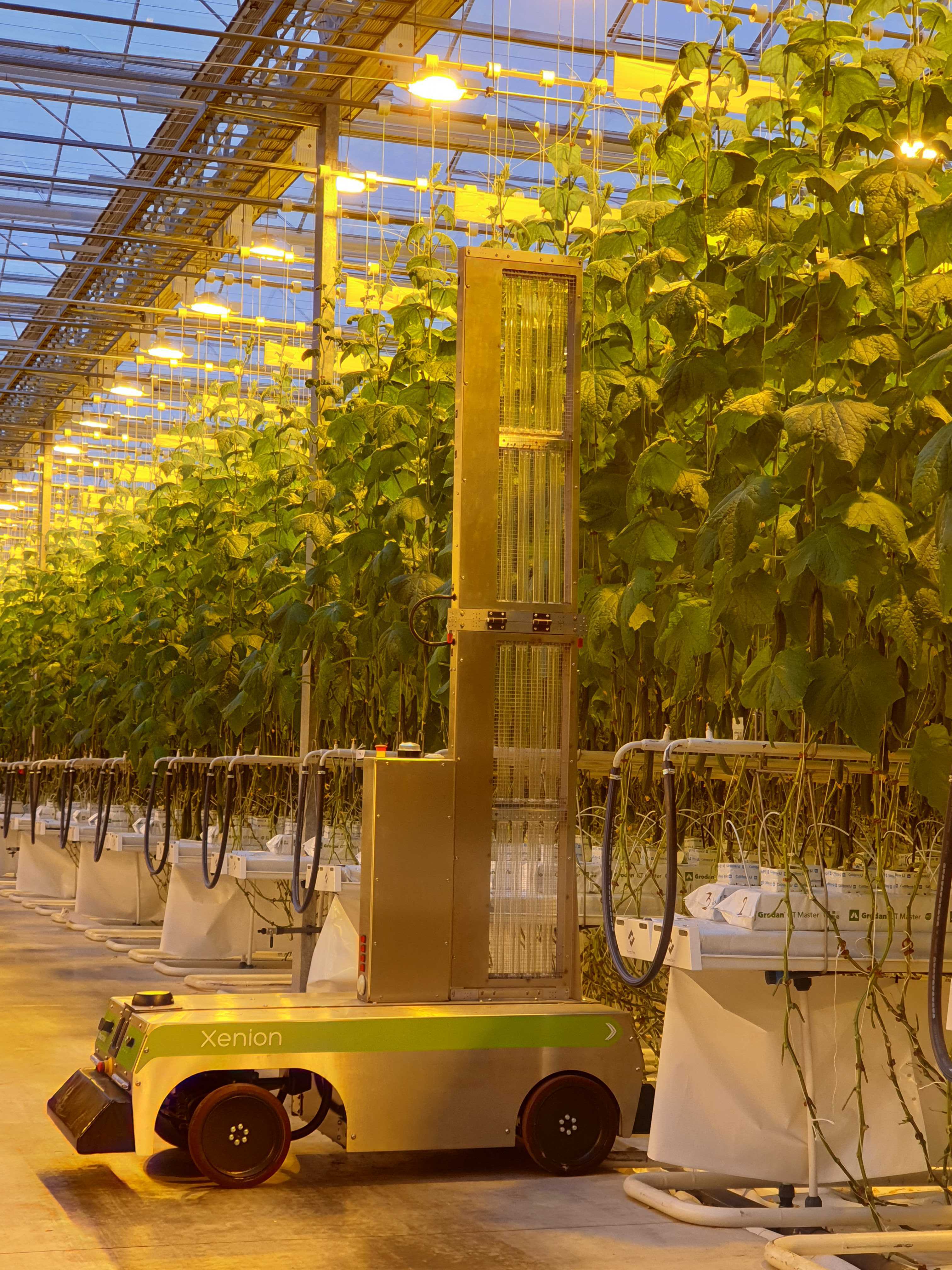With the end of the project approaching, different growers started using UV-robots in practice. Some other growers might still be in doubt about the purchase and need more practical information. That is why we want to finalize the project with an article on the practical use with a few do’s and don’ts.
General Use
A few measurements need to be taken to ensure the correct functioning of the robot and to guarantee your safety. The practices are self-evident, but make sure to hit these checks when you get started using UV in your greenhouse.
Best practices for using autonomous robots in your greenhouse:
- make sure the central path and area where the robot has to fulfill a treatment are free of obstacles
- remove any tools, carts, crates, … that may prevent the robot to treat the entire area
- a good crop nursing (e.g. guiding the stems into the supports for tomatoes and cucumbers) is essential
- make sure your piperail system is in a good condition as described in the Arbo-catalogue for scissor lifts (https://www.stigas.nl/agroarbo/glastuinbouw/buisrailsysteem/)
- make sure the piperails are flat on the concrete path
- perform a visual inspection of the robot before setting it up for a treatment to check if there are no damages
- when needed clean the robot with a soft cloth, especially the camera system
- charge the robot after every treatment and make sure the charging unit is charging before leaving
- make sure no dirt gets collected around the bulbs
Specific safety guidelines when using UV-c treatment:
- make sure only trained people have access to your greenhouse/environment
- perform the UV-c treatment at night when no workers are present in the greenhouse
- when the robot is in autonomous mode, always keep a safe distance of 10m from the UV-c lights
- always wear a protective face shield (blocking UV-c light) and clothes covering your skin when entering this 10m zone
But most important: let the robot take care of your crop protection and relax!
Strategies per crop
The project consortium optimized the dosage and use of UV-light over the last years. This resulted in an optimized dose, frequency and moment specific for strawberry, tomato and cucumber. Following these strategies, you can expect the best pest management with minimal consequences for your crop and production.
|
Strawberry |
Tomato |
Cucumber |
|
|
Dose (J/m²) |
90 |
30 |
50 |
|
Start treatments |
first regrowth of plants |
4 weeks after planting |
3 to 4 weeks after planting |
|
Frequency |
3 times a week |
3 times a week or every other day |
3 times a week or every other day |
|
Moment |
at night |
at night |
at night |
|
Lamp |
Uniform light distribution over plant |
Lamps at height of the plant heads should be turned off |
Lamps at height of the plant heads should be turned off |

